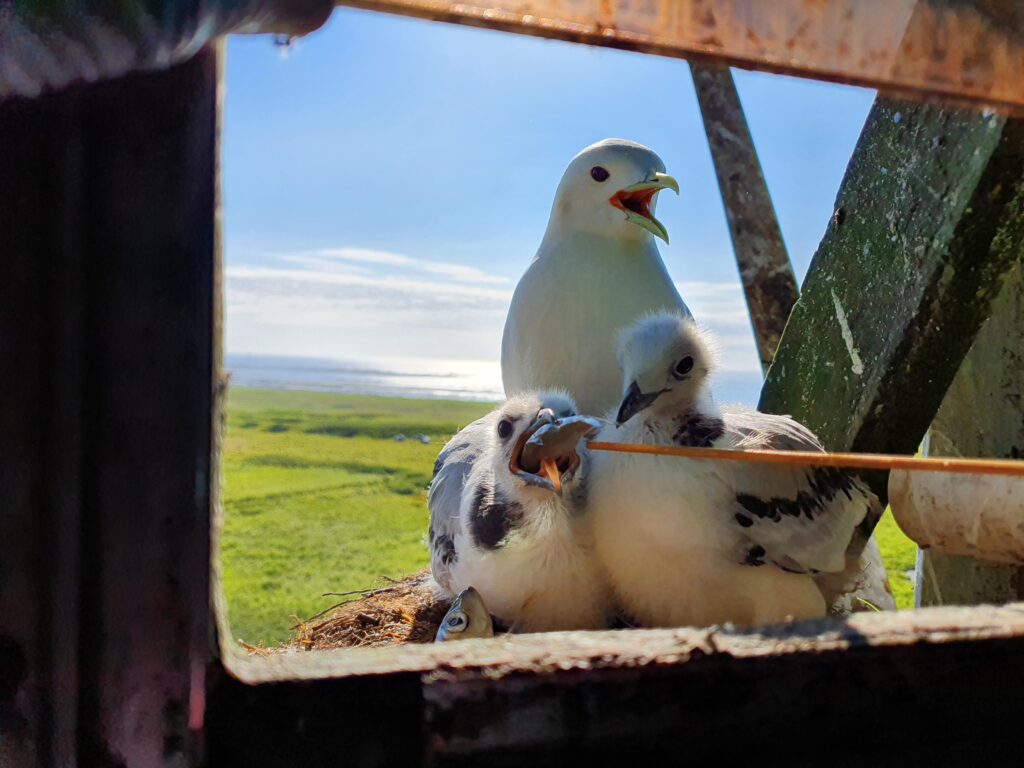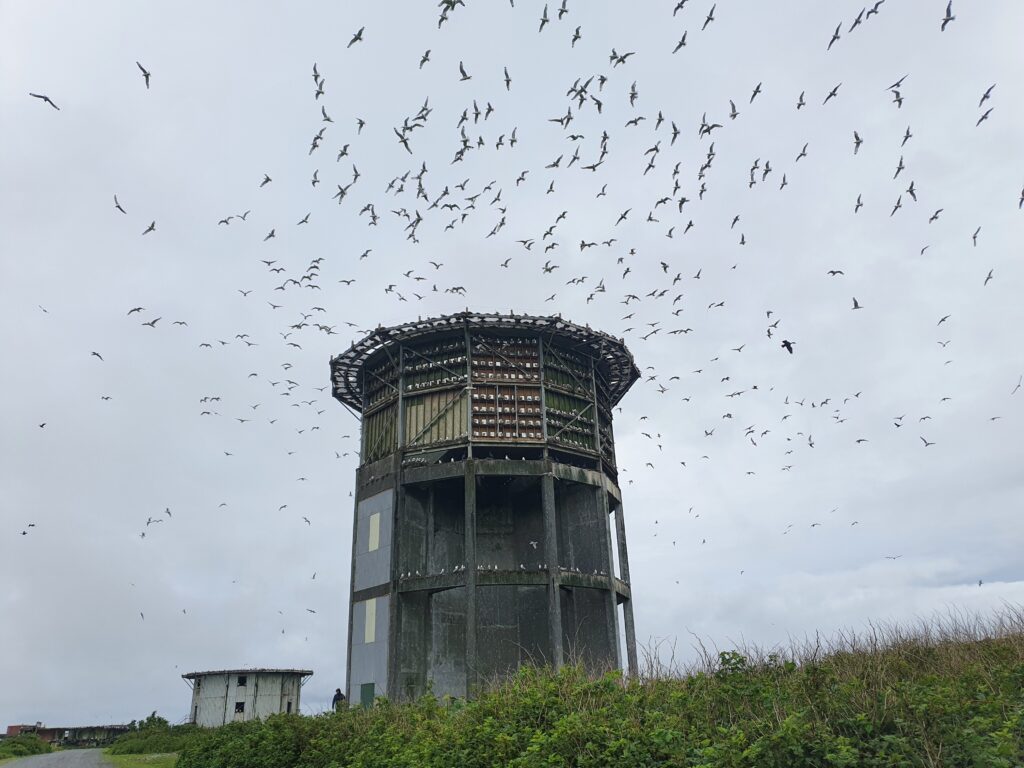The black-legged kittiwake (Rissa tridactyla) is a pelagic species of gull that breeds in the arctic and sub-arctic and spends the non-breeding season in the open ocean of the north Atlantic and Pacific. The species has been well-studied across its range owing to its ubiquity and accessibility, breeding in large, dense colonies and readily occupying man-made structures. Kittiwakes are diurnal at the colony and are mainly piscivorous, with limited interactions with anthropogenic food sources, unlike other gulls. Despite laying up to three eggs, siblicide is common and the first hatched chick is the most likely to fledge. Our group’s work on the kittiwake started in 2021, in collaboration with McGill Univeristy, Canada, and the University of Tsukuba, Japan, looking at the carry-over effects of reproductive effort into physiological body condition, migratory strategy, and future reproductive effort. We are also interested in determining the role of behavioural syndromes in interindividual differences in migratory strategy.
 © Jacopo G. Cecere
© Jacopo G. Cecere © Jacopo G. Cecere
© Jacopo G. CecereStudy site
Middleton island (Alaska, USA). Fieldwork started in 2021.
